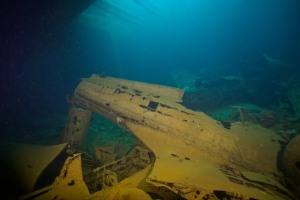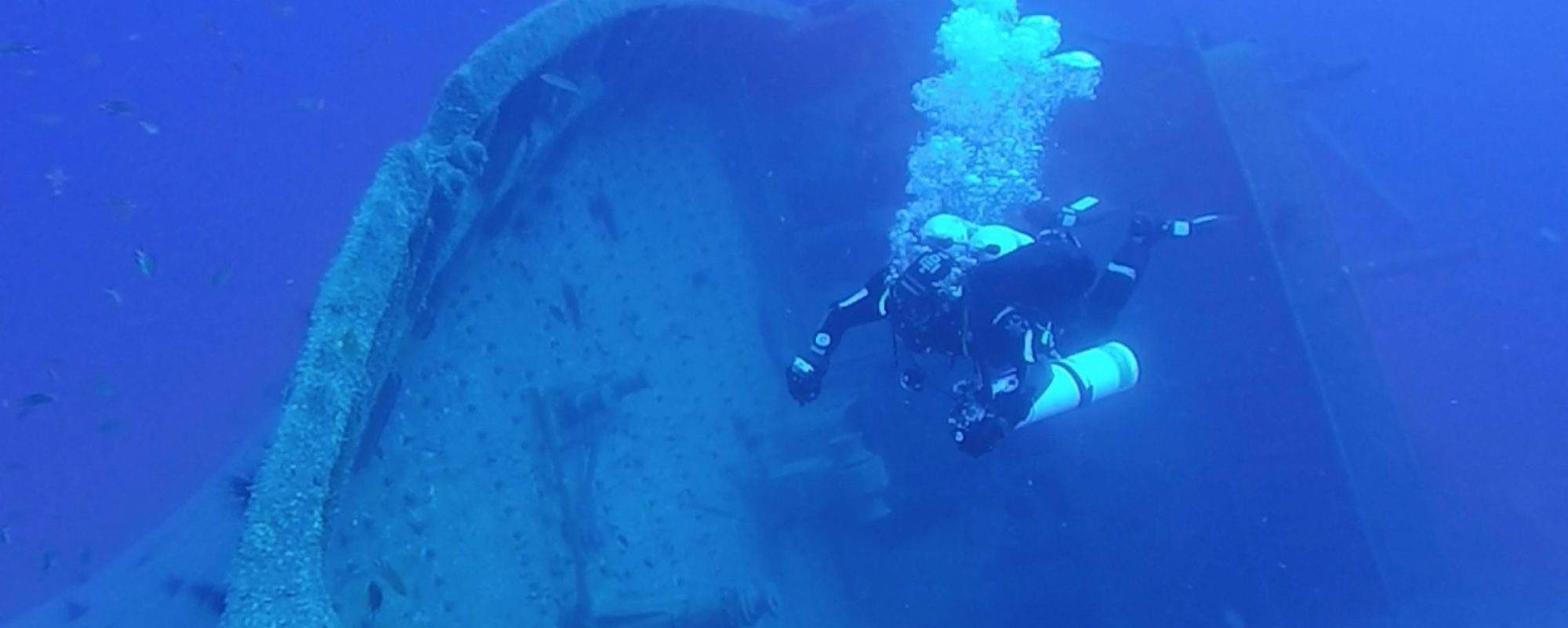Wreck diving is one its kind. You dive, see and learn history, you explore places seen by just a limited number of divers, and you experience something “cool”.
Not many people can have this privilege. Some wrecks are accessible in the recreational diving range; some others are reserved for experienced technical divers only.
No matter what wrecks you are diving, some basic common sense rules apply.
On top of the “Cave diving etiquette” rules (see here: https://www.tdisdi.com/cave-diving-etiquette/ ), please kindly keep in mind the below personal advises:
- Wrecks are not just a pile of scrapped iron lying on the seabed floor: Wrecks are full of history. War ships that have seen battles, victories or hard moments of surrender, with their own memories and souls of hundreds of sailors fighting on and giving their life to save their beloved ships…
Cargo ships with lots of heavy storms under their keel and even crew still inside their immersed structures.
Historical ships with hundreds of years in their back, real underwater museums are there for our privilege to explore their stories.
Therefore, treat all wrecks with respect.
Dive sites declared graveyards should remain as they are.
- Wrecks are made mostly of metal and/or wood. And as any material coming in contact with oxygen (from the water), is oxidizing. Therefore, their status is deteriorating slowly, year by year. Sometimes, violent storms accelerate this process of destruction. Approach wrecks with maximum attention and care. Do not sit on pieces of metal that are obviously fragile (airplane wings, motor vehicles etc). Master your buoyancy. Penetrate the wrecks with absolute maximum caution! Weak or moving parts might become loose and create obstructions on the way out or even catastrophic blockages.
- Metal parts of the wrecks can act like sharp knifes if improper approached. Even if artificial wrecks are carefully prepared for diving penetration, as the wreck’s status is changing in time, various metal parts can become dangerous. With wrecks non-artificial sunk, the risk is even greater. As well with the other components inside a wreck: electrical cables, moving parts (doors, hatches, cylinders, barrels).
- While wreck penetration, access with great care in the empty spaces inside. Diesel oil and fuel oil might float inside. Gases can accumulate and create unsafe environment for you if inhaled. Keep your diving gear safe too!
- Use proper diving techniques and gear for a safe wreck diving penetration. Untrained group of divers are taken daily around the globe to “explore” inside wrecks, for the sake of financial profit of the dive centers or dive guides!
You are in overhead environment and such overhead rules must apply at all times, with no exceptions! Do not trust and blindly follow your dive guide – memories your itinerary, run guidelines, stay inside of your training & gear limits! Be aware of false “light zone” or “false exit” places!
The fact that no serious accidents happened (or not so many) is just because of pure luck.
- Artifacts – let them there for the enjoinment of others too. If you have the chance to discover something new, proceed with great care in assesemenet the site and ask for professional advices. Once the site is damages, lost of important information is lost too. As an old recreational diving motto says: touch with your eyes, take memories and leave bubbles (or bubble-less in case of CCR divers ☺).
- Very “fresh”, new wreck, sunk by accident or storm… Stay away of any penetration until the wreck is stable as she will be “alive” for long time (means lots of moving and floating objects inside!). Let other more experienced wreck divers to explore the wreck, with proper logistic of course at a proper moment.
- Make your homework before departing to any wreck diving activity: collect various weather reports, professional ones preferable and compare them. Have the team in good physical and mental status, with proper diving gear, gases, back up, first aid kits, communication devices (VHF marine radio, mobile phones etc), let family knows your plans, call authorities and exchange the necessary information (Coast Guard), have contacts with hyperbaric center etc.
Do the briefing (and debriefing too) – collect and share valuable and trustable information regarding the dive site (wreck’s status, sea condition, back-up and emergency plans etc). Good idea if a leader (with more experience/higher rank) is established (when the group is not guided under a dive center/dive guide commercial agreement).
- I know that all of you love to take your photo/video latest camera and make your friends jealous… Please, refrain of taking those gadgets till you gain enough experience to perfectly control your buoyancy, trim and diving gear. Learn your camera features and buttons on dry land first and later take it to dive. Continuously analyze the ambient around if you can use the camera & lights (including the arm span of the lights) inside the wreck (attention to narrow spaces and obstructions). Backscatters might affect your visual range ahead and around you. Safety first, camera later!
- Never be afraid to cancel a dive for whatever reason you have! Is your responsibility for your own health but as well, you are responsible for your team too.
Update on #1 (May 12, 2018):
as reported by Greg Piper (a professional photographer & journalist): “Tragedy in Truk because divers still refuse to act responsibly. The famous wreck of the Fujikawa Maru I’m sad to report, suffered another devastating blow.
The famous aircraft in her cargo hold the “Claude” whose tail used to rise up@out of the wreckage is NO LONGER. A diver who, according to local guides, was sitting on the tail, posing for a photo bound to catapult his career on social media past 1000 followers and 100 likes, broke the tail off the aircraft. 75 years of history, the most photogenic aircraft in the lagoon….GONE. Why? Simply because divers continue to treat this place and these wrecks with utter disregard.”

Dive safe!
Costa – ANDI IT #170
ANDI Trimix Instructor L5
ANDI Technical Trimix Wreck Instructor L3/ Exploration Trimix Wreck L5 Diver
Wreck Divers Awareness and Exploration Club®


